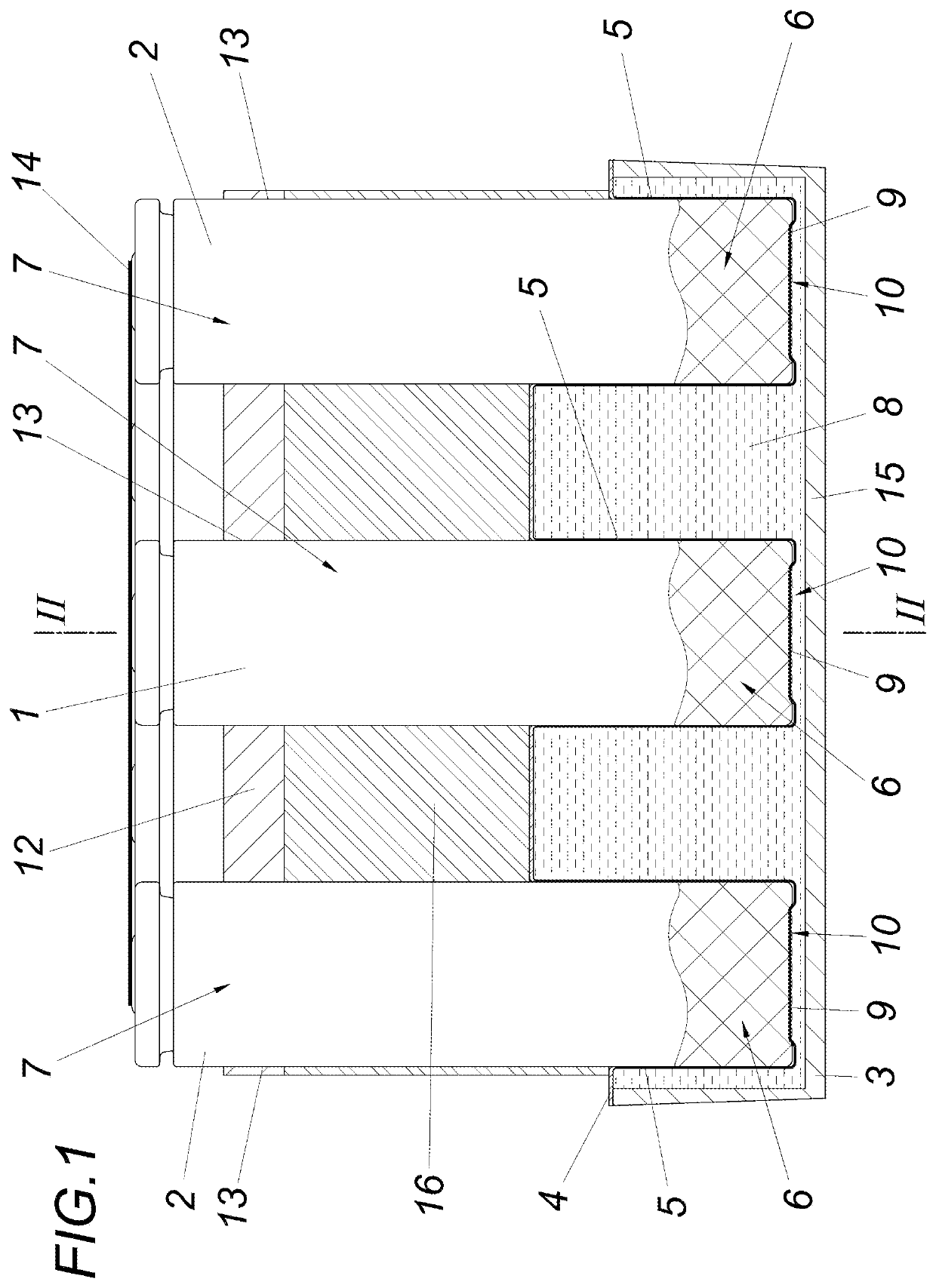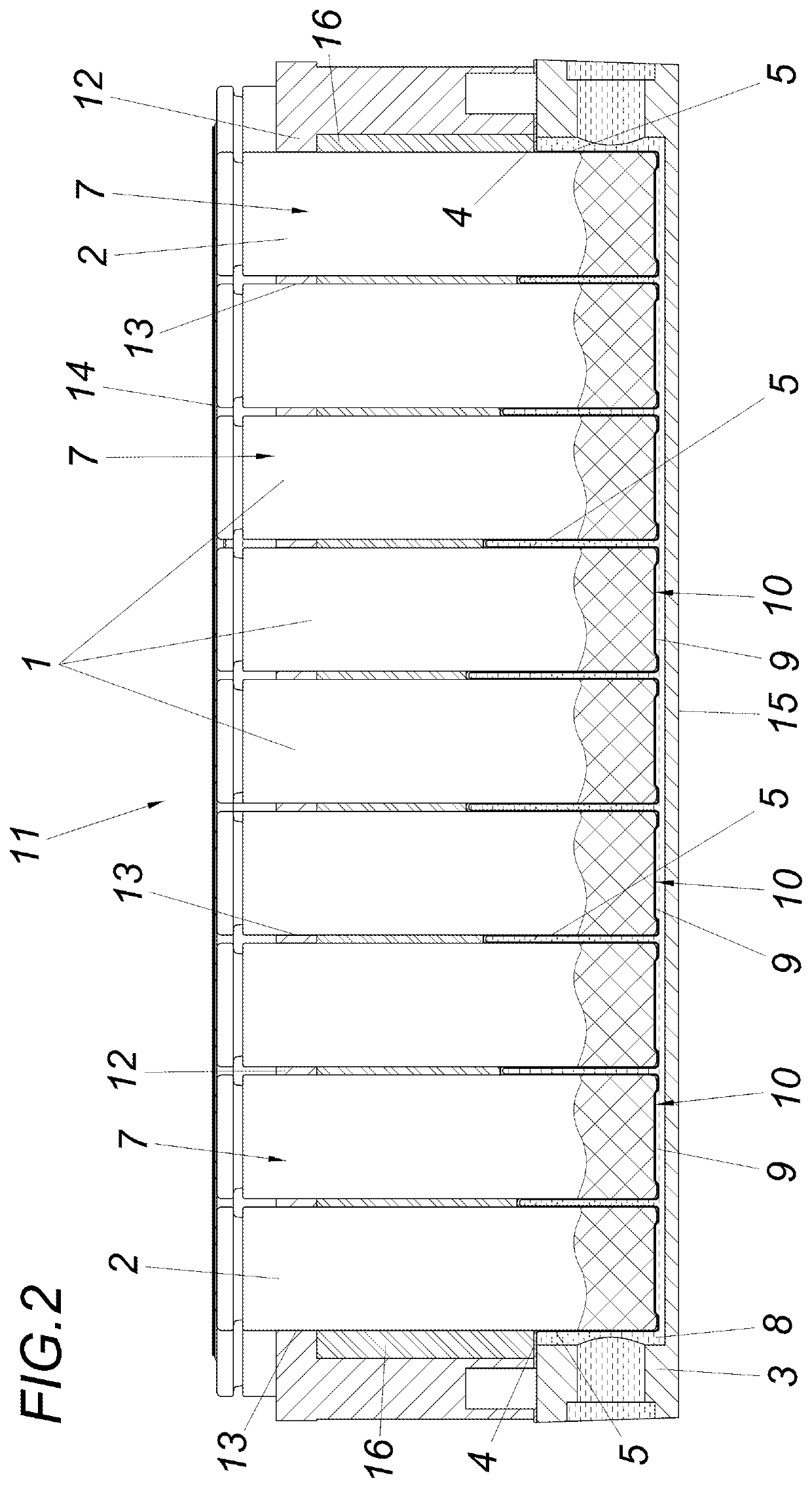Cooling device for battery cells assembled into a module
a battery cell and cooling device technology, applied in cell sealing materials, cell components, cell cases/jackets, etc., can solve the problems of increasing the risk of temperature control fluid escaping from the flow channel, mechanical damage to the battery cells and the cooling device insert, and affecting the efficiency of the cooling devi
- Summary
- Abstract
- Description
- Claims
- Application Information
AI Technical Summary
Benefits of technology
Problems solved by technology
Method used
Image
Examples
Embodiment Construction
[0004]The invention is therefore based on the task of designing a cooling device of the type described above in such a way that the battery cells can be reliably accommodated with low manufacturing costs and high performance with respect to temperature control, without having to take into account the manufacturing tolerances of the battery cells in advance.
[0005]The invention solves this problem in that the receptacles form a fluid-tight membrane enclosing the end portion of the battery cells, which membrane is designed to be deformable to compensate for the tolerances of the individual battery cells and rests against the bottom of the cells when the flow channel is filled.
[0006]As a result of these features, reliable tolerance compensation can be provided in the event of operationally induced changes in geometry, both with regard to cell contour variations and with regard to the relative position of the cells held in the receptacles with respect to one another, while the membrane b...
PUM
| Property | Measurement | Unit |
|---|---|---|
| pressure | aaaaa | aaaaa |
| thermal resistances | aaaaa | aaaaa |
| temperature | aaaaa | aaaaa |
Abstract
Description
Claims
Application Information
 Login to View More
Login to View More - R&D
- Intellectual Property
- Life Sciences
- Materials
- Tech Scout
- Unparalleled Data Quality
- Higher Quality Content
- 60% Fewer Hallucinations
Browse by: Latest US Patents, China's latest patents, Technical Efficacy Thesaurus, Application Domain, Technology Topic, Popular Technical Reports.
© 2025 PatSnap. All rights reserved.Legal|Privacy policy|Modern Slavery Act Transparency Statement|Sitemap|About US| Contact US: help@patsnap.com


